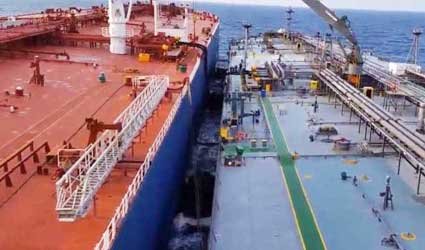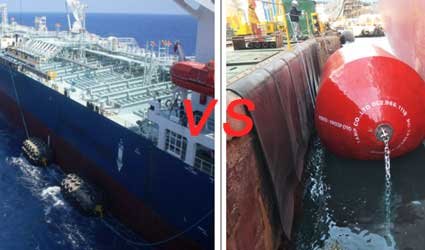
Pneumatic Fenders VS Foam Fenders
08/29/2018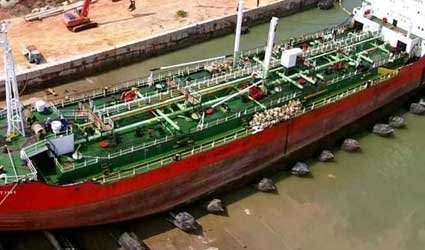
How to use marine airbags to launch and land ships?
07/23/2021
The Introduction and Guidance of Ship to Ship operations
A ship-to-ship (STS) transfer operation is the transfer of cargo between seagoing ships positioned alongside each other, either while stationary or underway. Cargoes typically transferred via STS methods include crude oil, liquefied gas (LPG or LNG), bulk cargo and petroleum products.
For ship-to-ship operations, usually 3-5 pcs primary pneumatic fenders and 2-3pcs secondary pneumatic fenders are put between two ships, if transfer oil or liquefied gas, STS hoses will be used to connect two ships cargo oil systems or gas tanks. Pneumatic fenders usually are anchored by mooring ropes to one ship’s main deck bollards.
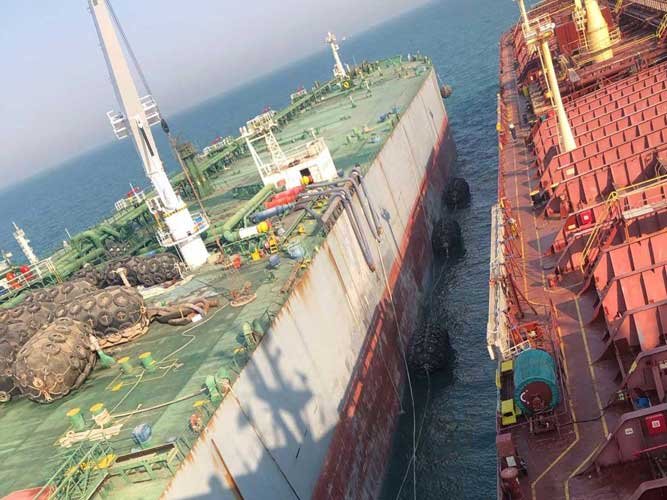
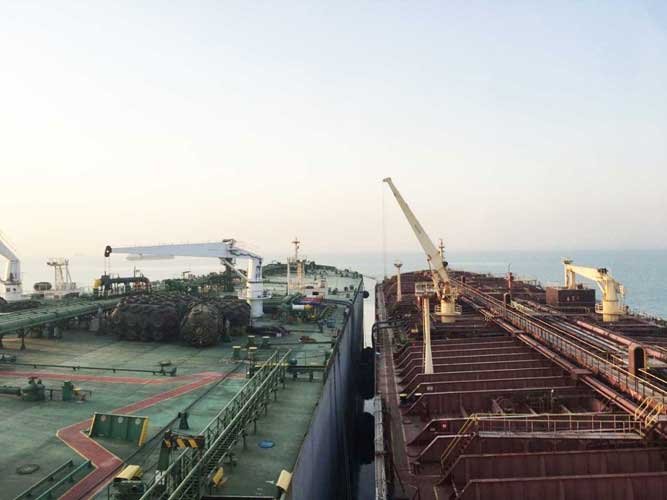
How to choose fenders
How to choose fenders procedure for ship-to-ship operations is outlined below. Two ships types, sizes and weather conditions such as Calm, Moderate and Rough are initially confirmed.
OCIMF Table (Fenders Quick and Simple used for STS)
Equivalent displacement coefficient :"C" is calculated,and fenders are used tentatively by using the table in OCIMF Ship-to-Ship Transfer Guide ;"OCIMF Table", Table as following. In this case,initial internal pressure of the fender shall be 50kPa (Pneumatic 50). The chosen are designed based on Calm weather condition,therefore if the weather is confirmed as Calm,the fender system can be simply chosen from the tables.
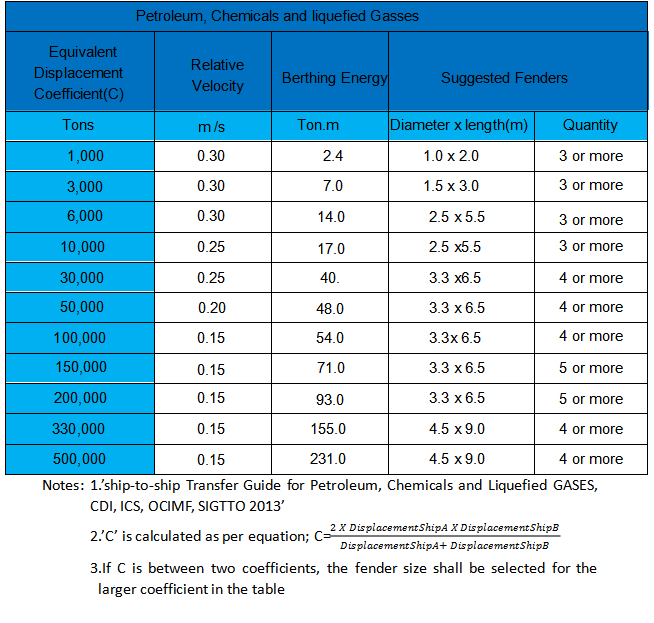
Select fenders according to Berthing energy
Calculate the berthing energy of the two ships. If energy absorption capacity of the tentative selected fender (Ef) is larger than the calculated berthing energy (E, it is confirmed that a suitable fender selection has been made. If the fender energy absorption capacity is less than the calculated berthing energy, the tentatively selected fender shall be change to larger size.
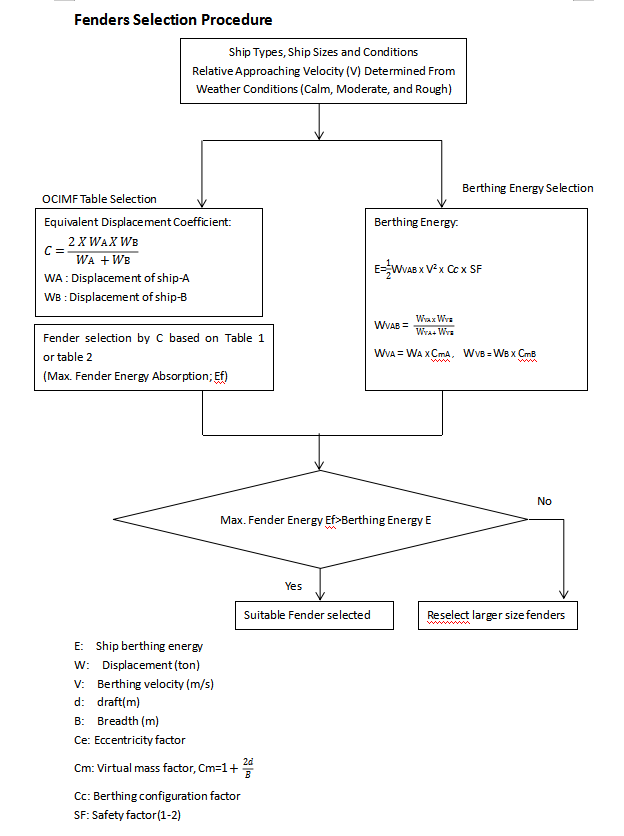
Equivalent Displacement Coefficient
The equivalent displacement coefficient will vary depending on each ship particulars and the type of Ship-to-Ship operation. The three types of Ship-to-Ship operations are described in Table 2 below.

It is obvious that ship's displacement at the ordinary lighting or the reverse lighting operation is smaller compared to that for the full-full berthing, however, at the severest condition when the two vessels are both almost full, the displacement become similar to condition of the full-full berthing and therefore the fender system should be chosen considering the full-full berthing even in case of the ordinary lighting and the reverse lighting operation.
The berthing energy needs to be calculated considering weather conditions. categorized by the three conditions Calm, Moderate and Rough, and the approaching velocities to calculate the berthing energy are assumed to be as shown in Table 3. These are obtained from various industry references and standards. The three different weather conditions are defined by sea state and significant wave height as shown in table 3.
This table shows figures for tankers,but it can be applied to other kinds of ships, if their virtual weights correspond to those in the table.
Berthing Energy
The berthing energy needs to be calculated considering weather conditions. categorized by the three conditions Calm, Moderate and Rough, and the approaching velocities to calculate the berthing energy are assumed to be as shown in Table 3. These are obtained from various industry references and standards. The three different weather conditions are defined by sea state and significant wave height as shown in table 3.
This table shows figures for tankers,but it can be applied to other kinds of ships, if their virtual weights correspond to those in the table.

STS hose
STS hose should be used according to the oil or liquid gas varieties, mainly can be categorized to rubber hose and composite hose according to the main material of the hose.
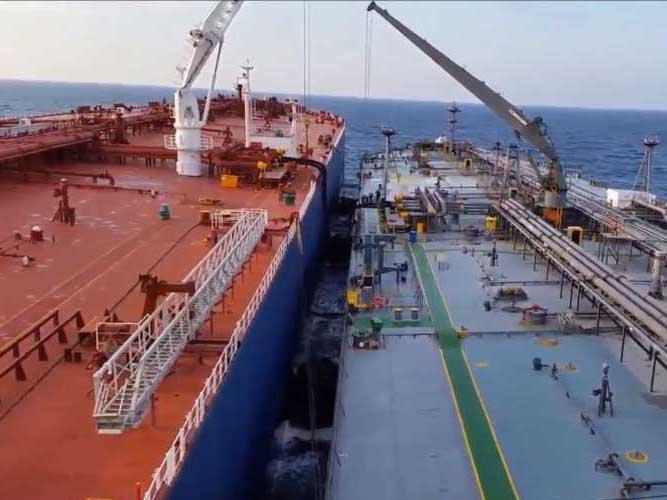
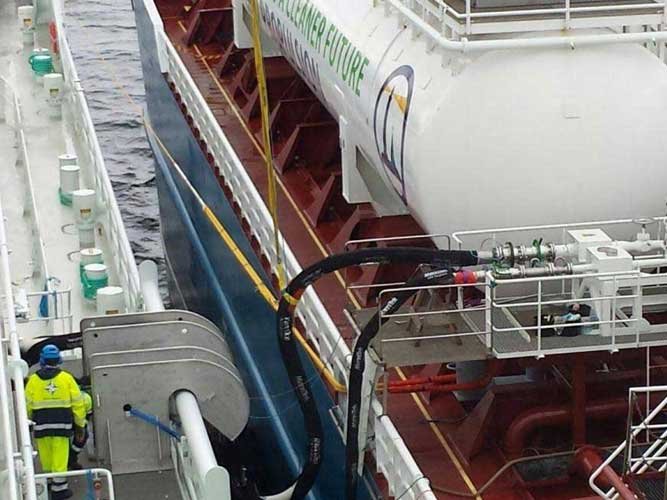
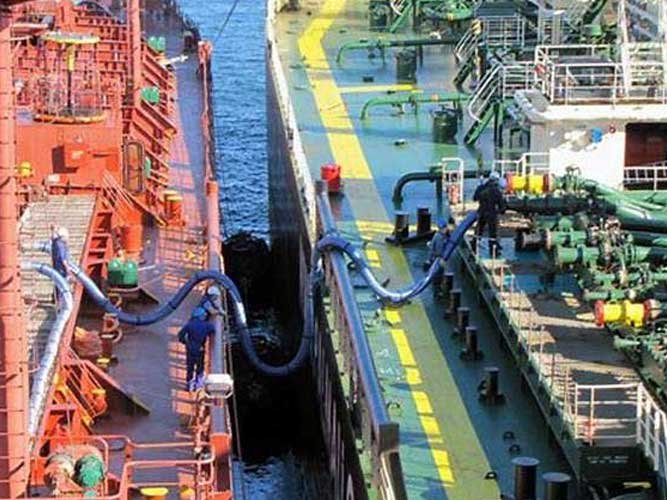

Mooring ropes for STS
There are different material mooring ropes can be used for STS operation, nylon ropes, Polypropylene ropes, UHMWPE ropes (Dyneema ropes),or several material composite ropes, etc.

